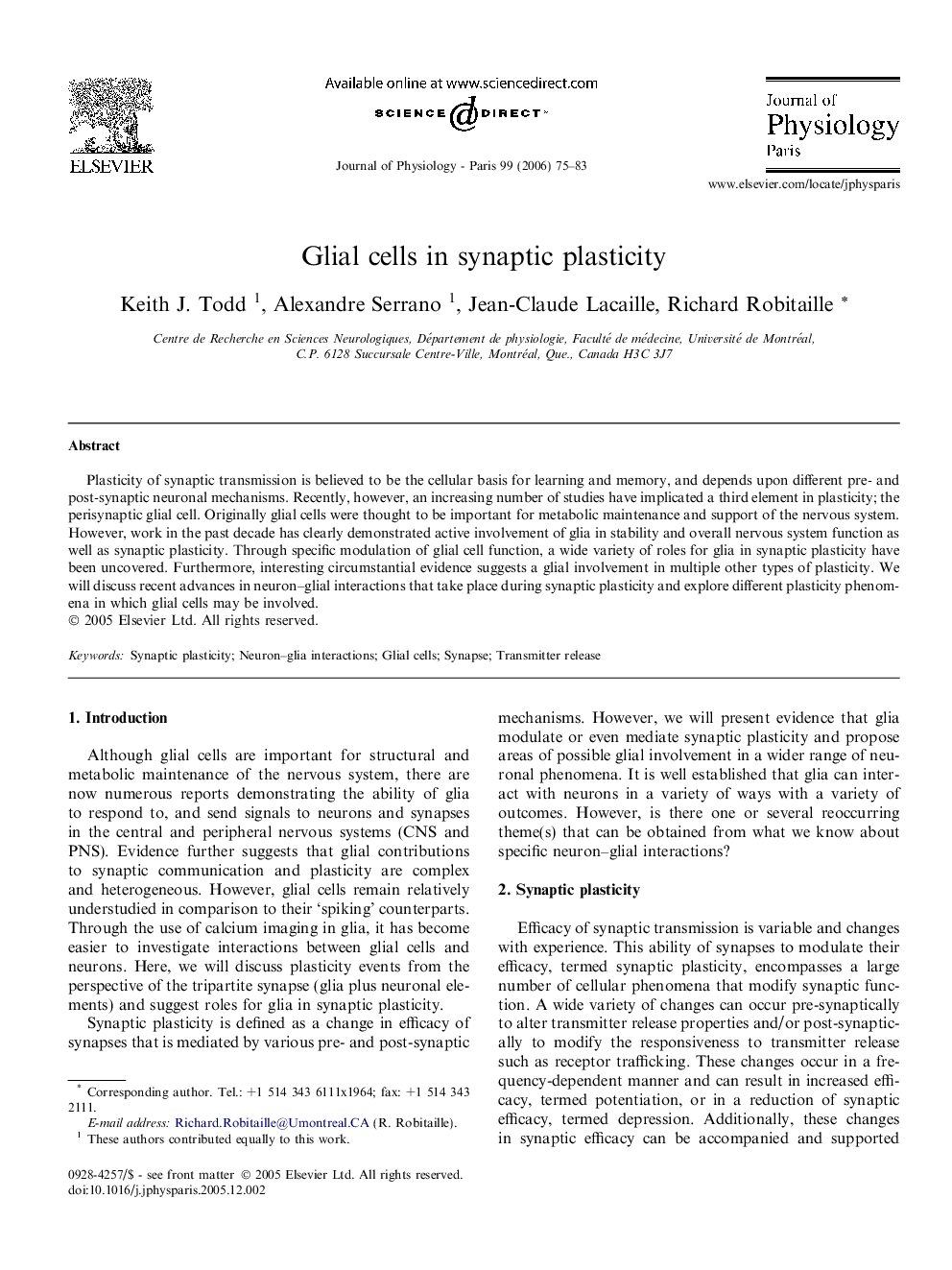| Article ID | Journal | Published Year | Pages | File Type |
|---|---|---|---|---|
| 2842536 | Journal of Physiology-Paris | 2006 | 9 Pages |
Plasticity of synaptic transmission is believed to be the cellular basis for learning and memory, and depends upon different pre- and post-synaptic neuronal mechanisms. Recently, however, an increasing number of studies have implicated a third element in plasticity; the perisynaptic glial cell. Originally glial cells were thought to be important for metabolic maintenance and support of the nervous system. However, work in the past decade has clearly demonstrated active involvement of glia in stability and overall nervous system function as well as synaptic plasticity. Through specific modulation of glial cell function, a wide variety of roles for glia in synaptic plasticity have been uncovered. Furthermore, interesting circumstantial evidence suggests a glial involvement in multiple other types of plasticity. We will discuss recent advances in neuron–glial interactions that take place during synaptic plasticity and explore different plasticity phenomena in which glial cells may be involved.
